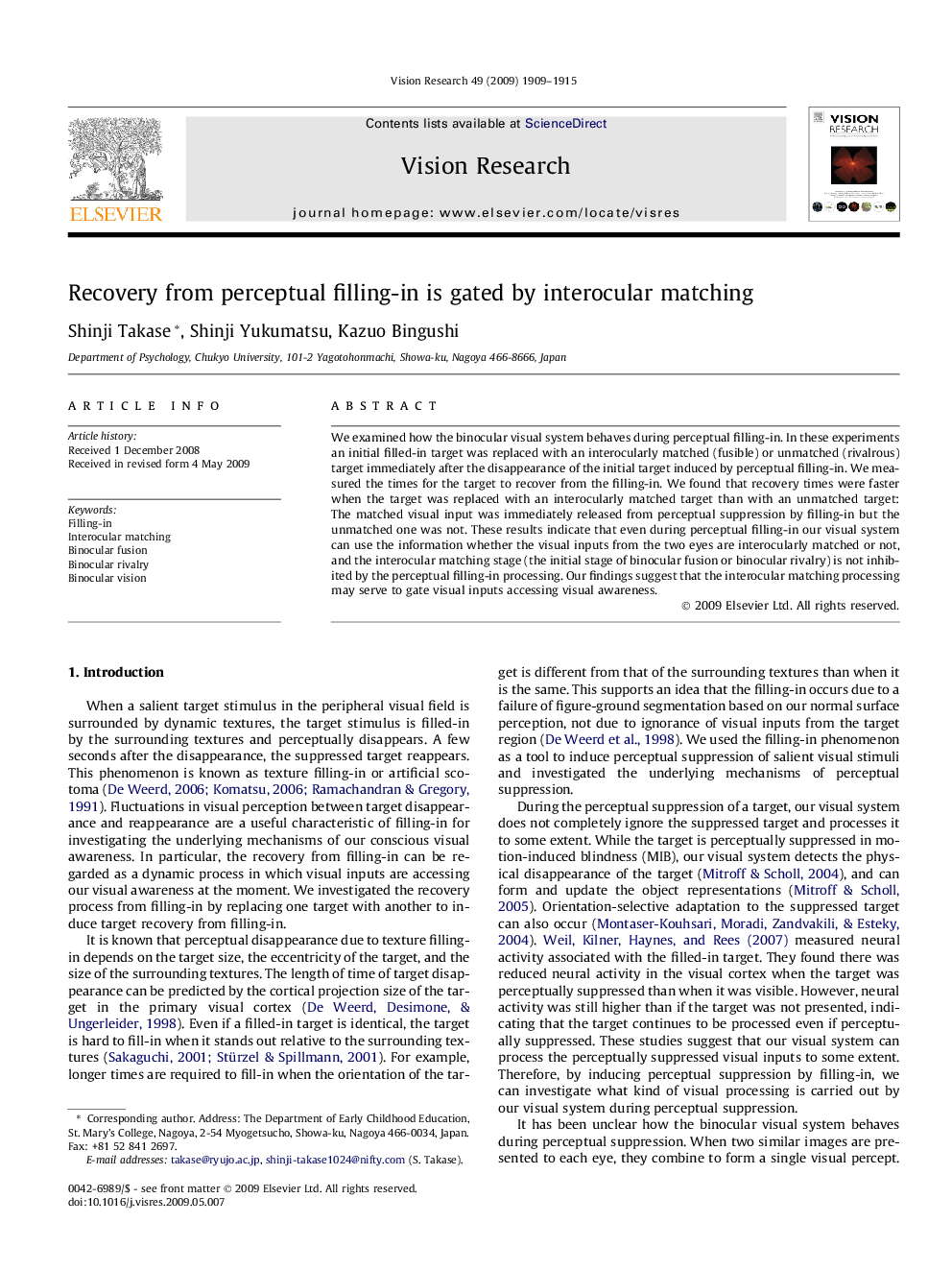| Article ID | Journal | Published Year | Pages | File Type |
|---|---|---|---|---|
| 4035272 | Vision Research | 2009 | 7 Pages |
We examined how the binocular visual system behaves during perceptual filling-in. In these experiments an initial filled-in target was replaced with an interocularly matched (fusible) or unmatched (rivalrous) target immediately after the disappearance of the initial target induced by perceptual filling-in. We measured the times for the target to recover from the filling-in. We found that recovery times were faster when the target was replaced with an interocularly matched target than with an unmatched target: The matched visual input was immediately released from perceptual suppression by filling-in but the unmatched one was not. These results indicate that even during perceptual filling-in our visual system can use the information whether the visual inputs from the two eyes are interocularly matched or not, and the interocular matching stage (the initial stage of binocular fusion or binocular rivalry) is not inhibited by the perceptual filling-in processing. Our findings suggest that the interocular matching processing may serve to gate visual inputs accessing visual awareness.
